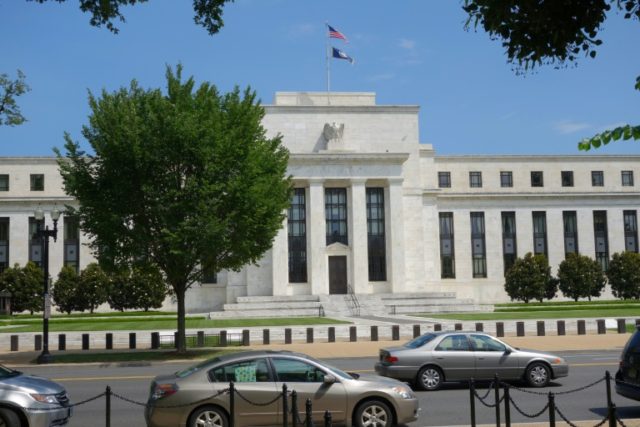Washington (AFP) – A spate of relative calm in global markets could swing the Federal Reserve away from its dovish stance Wednesday when it updates monetary policy after a two-day meeting.
But amid continued worries about slow global economic growth and the possibility that Britain will vote to exit the European Union in June, the Fed is not expected to make any changes to interest rates for now.
Markets were already focusing more on what might happen in June as the policy-setting Federal Open Market Committee weighs the US economy’s first-quarter lull and the slowdown in global growth.
With Chair Janet Yellen having tilted the divided FOMC to the dovish side in its March review, analysts say the group has room to wait and see what happens in the coming months.
Estimates are that the US economy grew at a pace of only 0.9 percent in the first quarter, down from 1.4 percent at the end of 2015.
Data released Tuesday showed the industrial sector still weak, with durable goods orders up just 1.4 percent year-on-year in the first quarter, and consumer confidence slightly lower.
But at the same time the US jobs market continues to tighten and persistently strong job growth is expected to keep boosting consumer spending, so that most forecasts for the second and third quarters are much stronger.
How the FOMC weighs that against outstanding risks to the economy, particularly the Brexit vote on June 23, will be crucial in assessing whether the Fed will raise interest rates later this year.
Markets were clearly not expecting any change in policy on Wednesday. The dollar, which weakened after the last Fed meeting in March, was relatively steady at $1.1326 per euro.
And the indication from CME fed fund futures prices was that markets do not really expect the next rate hike before September at the earliest.
– Lack of urgency –
When the FOMC made its first rate increase in more than nine years in December, putting the short-term benchmark at a still ultra-low 0.25-0.50 percent, the expectation was for another 0.25 percentage point rise each quarter over 2016.
But so far this year, noted economist Chris Low at FTN Financial, what is notable about the FOMC is “the lack of urgency by Yellen and Co.”
Although one key determinant of policy, employment levels, has improved strongly each month, with the unemployment rate now at 4.9 percent, the other main indicator, inflation, remains very weak.
But the Fed has also focused on another variable, the turbulence in global markets that has been spurred at least in part by its plans for tightening US monetary conditions.
Backing up the idea that events like Brexit and Chinese market volatility are on the mind of the FOMC, a study of Fed policy statements under Yellen and under her predecessor Ben Bernanke by Standard Chartered showed an equal focus on stability, though Bernanke led the central bank through the financial crisis and Yellen’s time has been easier.
“The Fed is attaching just as much significance to financial stability as it did during the recession,” the study concluded.
“We expect that the minutes of the Fed’s April meeting will continue the trend of emphasizing financial variables, such as the most recent decline in market volatility.”

COMMENTS
Please let us know if you're having issues with commenting.